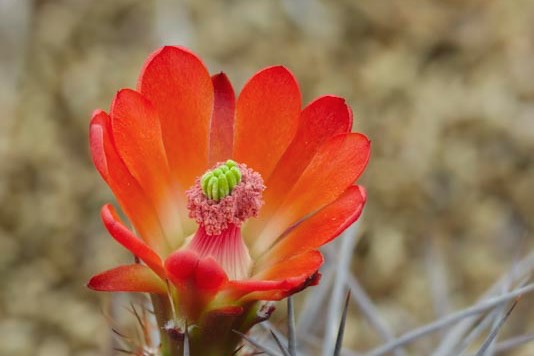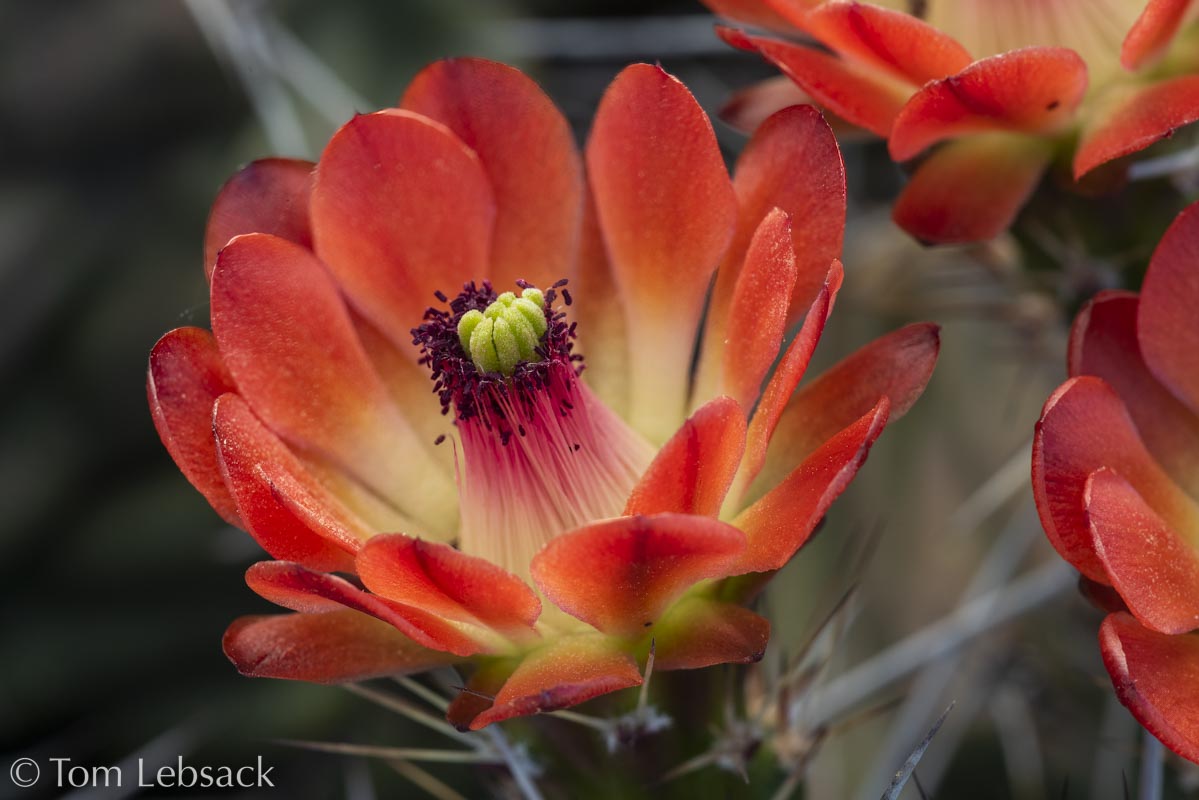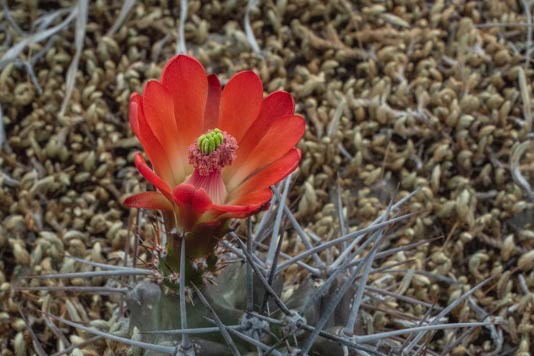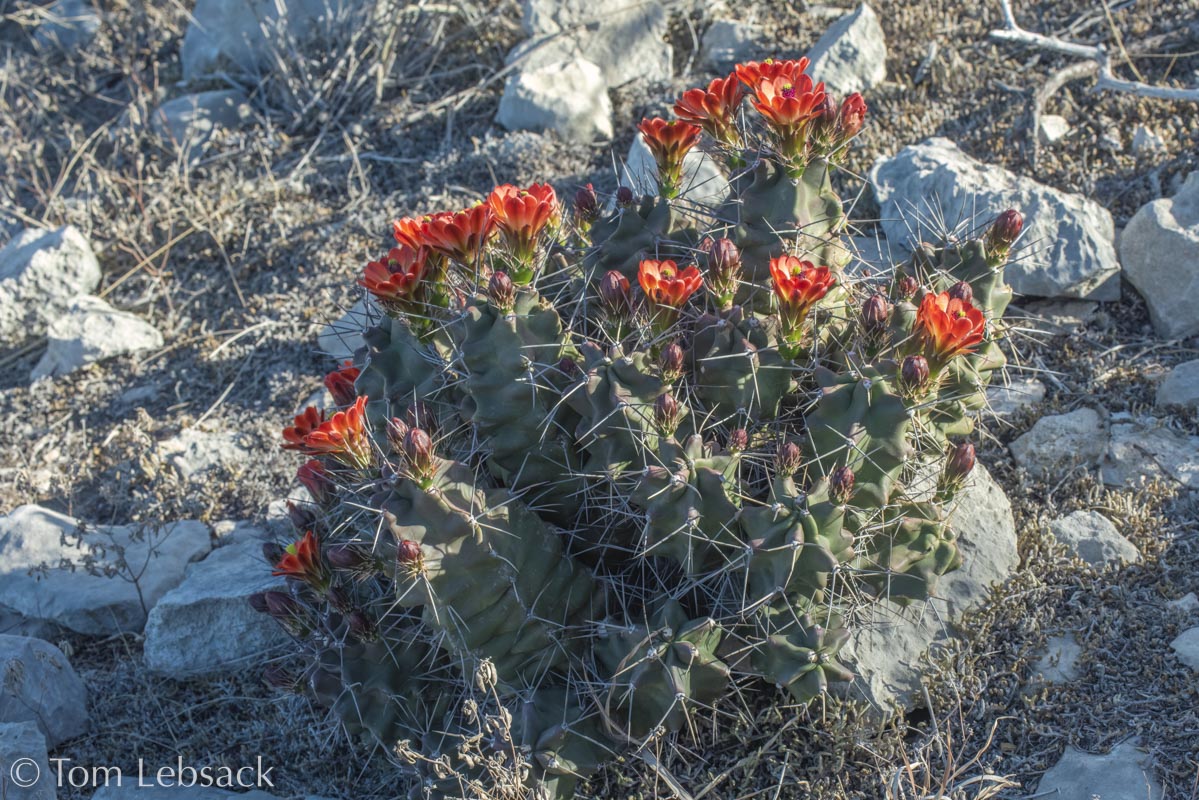Texas Wildbuds
Echinocereus coccineus var. paucispinus
(Claret Cup Cactus)
| Scientific Name | Echinocereus coccineus var. paucispinus | USDA PLANTS Symbol | ECCOP |
| Common Name | Claret Cup Cactus, Scarlet Hedgehog Cactus | ITIS Taxonomic Serial No. | 912748 |
| Family | Cactaceae (Cactus) | Wildflower Center Ref. | Click Here |
| Description | Habitat: Dry, semi-desert environments; limestone soils in shrublands, mesas, woodlands and alluvial soils of grasslands; from 500 to 2100 ft. Plant: Mounds up to 40 inches across and 4 to 16 inches tall of usually up to 20 stems, but very old plants can have many more. Pads & Spines: Stems with 5 to 7 obvious ribs, 0 to 1 central spine per areole, 1/2-inch to 2 inches long, and 4 to 8 radial spines 5/8-inch to 1-1/4 inches long; spines brownish-brown becoming gray. Inflorescence: Funnel to cup-shaped flowers with rounded, rather stiff, bright crimson tepals with cream-colored bases, 1-1/4 to 2 inches across; male flowers with cream-colored to reddish filaments and pinkish, pollen-filled anthers; female flowers with reduced filaments and empty anther sacs below ~8 green stigma lobes; tepals may be more orange-colored in the Marathon area. Bloom Period: March and April. Fruit: On female plants cross-pollinated by male plants; dull to bright red, obovoid to cylindroid, 1/2 to 1 inch long, with spines. References: "Cacti of Texas" by Powell, Weedin and Powell, "Little Big Bend" by Roy Morey, E. triglochidiatus var. paucispinus in "Manual of the Vascular Plants of Texas" by Correll and Johnston and A New Echinocereus Taxon with Red Flowers From the Trans Pecos Area of Texas by Blum and Oldach in "The Cactus Explorers". Note: According to Wolfgang Blum, var. paucipinus does not occur in Big Bend; those plants previously identified as such are actually the very similar ssp. transpecosensis. |
BONAP Distribution Map Map Color Key Map Color Key |
Texas Status: Native |
Banner photo of Castilleja indivisa and Lupinus ssp. taken along FM 1323 north of Johnson City, Blanco County
© Tom Lebsack 2025
Every attempt is made to provide accurate, up-to-date, and relevant information, but the completeness or accuracy of any information presented on this website cannot be guaranteed. I use authoritative references to insure high standards of accuracy and review and update the information frequently.



